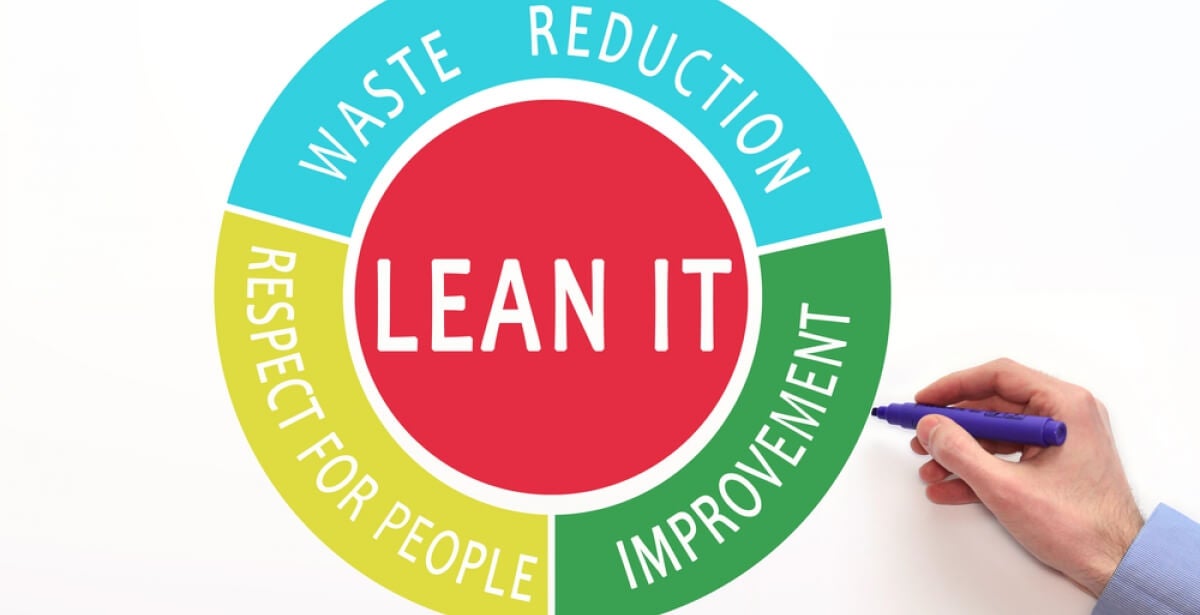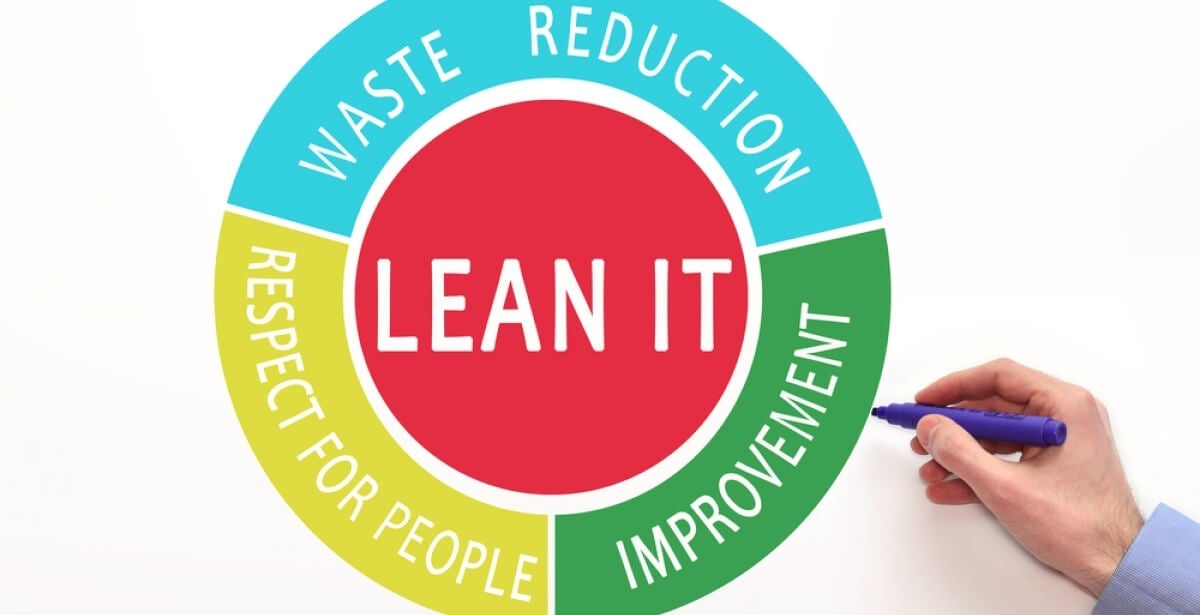
Lean Principles for Non-Profits and Educational Institutions: Doing More with Less
Lean is a methodical and systematic approach originating in the Japanese manufacturing industry as a result of the research of Edwards Deming to minimize waste within a manufacturing system without sacrificing productivity. This same idea can be adapted to a variety of industries. Those working in the automotive, manufacturing, or processing industries are likely familiar with the principles of lean, although professionals in other industries, especially those in healthcare, education, and the nonprofit sector, are also seeing the value in adopting this philosophy.
Implementing lean manufacturing concepts is an efficient way to use resources efficiently and empower employees to strive for perfection through continuous improvement. Learning how to implement lean manufacturing concepts, tools, and techniques begins with understanding the concepts of waste, value, and continuous improvement.
“In today’s economy, donors, the community, and grantmakers look carefully at whether every dollar your organization receives is well spent. If your goal is to create change and serve others, wasting resources won’t help achieve these goals (Hird & Noakes, 2014, para. 1).
The 7 Types of Waste
The lean philosophy identifies seven types of waste with the idea that minimizing waste begins to maximize value and provide for a smoother workflow. The following chart highlights examples of waste in the manufacturing industry and waste in the non-profit sector. This is an easy way to see how lean application can affect any industry.
|
Type of Waste |
Examples: Manufacturing Companies |
Examples: Nonprofit Organizations |
|
Overproduction |
Producing more inventory than can be sold |
Printing and filing unnecessary documents, extra copies of procedures or reports |
|
Waiting |
Machine downtime due to unsatisfactory maintenance |
Too many levels of signatures required for approvals, wasting time finding space for meetings or markers for a whiteboard |
|
Transportation |
Delivering the smallest order using the largest truck |
Any unnecessary movement of materials, information, or equipment |
|
Over-processing |
Producing anything more than needed or before it is needed |
Unnecessary steps in procedures |
|
Inventory |
Excess products taking up space |
Outdated literature, keeping closed files |
|
Motion |
Having to retrieve parts from several places in order to complete a task |
Any workflow that is not smooth, switching between software programs |
|
Defects |
Parts or products that are broken, order entry errors, design errors |
Incorrect coding, errors in databases, information that is inaccurate or incomplete |
Those working in the non-profit sector are often charged with having to do more with less — less time, less money, and fewer resources. Taking the time to speak with each department in the organization to ask for staff opinions about where waste is occurring combined with innovative thinking about how to improve policies and procedures, is a great first step in a lean implementation plan.
Value
In much the same way as a customer who buys a product, a client who receives a service is also expecting some sort of value for their money. Both for-and non-profits must figure out what customers and clients find valuable.
“When we look at applying lean concepts in a service environment, our main goal isn’t to take the cost out of a product. Instead, we want to remove the waste out of a process. And the goal is not a dramatic 100% waste elimination in the future but instead a continuous improvement process of waste reduction starting today. Lean supports clients through two core principles: increasing value and eliminating waste. The lean process is about reducing waste while increasing efficiency, productivity, and quality. The process is designed so we can do more of the things that clients value and less of the things that they don’t” (Morgan, 2018, para. 5 & 6).
Value stream mapping is a lean management tool used to visualize the steps needed to take a product through concept, design, creation, production, and delivery to the end-user. Since nonprofits are providing a service, the value stream map will look different, but its usefulness remains. For example, a value stream map for a non-profit organization may indicate all the steps in a particular process, and as each step is considered, in this new and visual way, the steps that do not provide value to the client are revealed. Then the step can be considered and perhaps deleted.
Most non-profits are not in the position of simply hiring more people or changing their physical space but what they can do is streamline policies and procedures and provide training for staff so that each person can manage their work in ways that minimize waste and improve value.
Continuous Improvement
The concept of continuous improvement is another tenet of the lean process. Being open to change and fostering a culture that supports change is integral to any lean implementation and transformation. “Kaizen” is the Japanese word for improvement.
“Ultimately, kaizen is the heart of Lean. Kaizen includes looking for ways to improve, being open to improvement, fostering a culture of improvement, thinking about processes in systemic terms, and having the humility to change. When applying kaizen philosophy, teams and individuals challenge systems, processes, and controls that have previously been viewed as permanent fixtures of operations. “The way things are done” becomes the subject of continuous scrutiny. Kaizen fosters a continuous flow of small ideas. Because kaizen promotes daily small changes, improvements can happen over time, which means faster, more efficient processes with less cost” (Bilich, 2015, para. 6).
Adopting a lean manufacturing model within a nonprofit can result in:
- Clearer methods of goal setting and measuring progress
- A staff who comes to together to communicate clearly, think critically about issues, and creatively about problems
- Fewer errors in databases and case notes
- A framework for efficiently managing changing priorities
- More refined processes to support smoother flows of information, data, and people
- A context for value stream mapping resulting in a better staff, client, and stakeholder experience
- A more motivated staff and volunteer corps who feel empowered to communicate, share ideas, and express opinions about potential changes to processes, policies, and procedures
Kettering Online's Innovative Master's Degree in Lean Manufacturing
The only program of its kind in the United States, Kettering University's online Lean Manufacturing master's degree program teaches the modern manufacturing process knowledge and Lean Six Sigma skills needed to improve quality output, streamline processes and reduce waste
The lean program at KUO truly enhances your skill set by learning to think lean. Lean thinking is a mindset and developing them here at KUO will promote you to apply it and make some strides in your career. The resources and learning materials have been revised and updated to include the latest research and methods. The methodologies learned will help you to bring about better efficiencies to your processes. The faculty are all well versed and continue to apply lean methodologies at their work and life to stay on a path of continuous improvement.
Sources:

